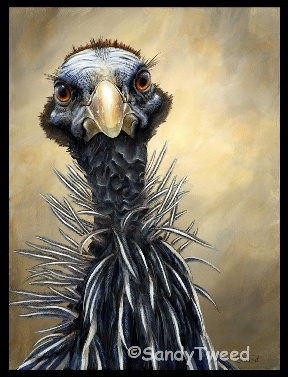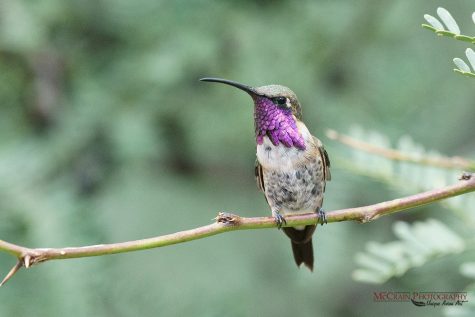Local Artist Spotlight: Phil McCrain and Sandy Tweed

Works of Sandy Tweed
There’s a certain air to the Pacific Northwest that can’t really be replicated elsewhere; the expansive evergreen forests, rolling hills, bodies of water, jagged peaks all around, all housing creatures that themselves are veritable troves of artistic admiration. It makes sense, then, that there are artists abound taking advantage of our surroundings — as demonstrated by the turnout at the most recent Bellevue Art Fair, this past August.
Two such artists spoke to this sentiment: Sandy Tweed, a Port Townsend resident and acrylic painter, and Phil McCrain of McCrain Photography.
Ms. Tweed specializes in acrylic painting, a career she took on after spending a decade teaching high school science and another as a building contractor. She explained that “I was always drawn to nature and critters,” citing when she brought home a baby razer clam as a child to keep as a pet — “that my mother then fed to my father, which was kind of heartbreaking,” — all the way into college when she regularly fed a squirrel that once urinated on her organic chemistry textbook, mirroring how she felt about it in the moment. This fascination led to a Bachelor’s degree in Zoology from the University of Washington. After becoming a parent, “teaching seemed like a logical choice, but it turned out to be more about managing students’ behavior than teaching subject matter and that wasn’t what I signed up for.” Nine years at the job proved to be enough, so she moved to building contracting before switching to an art career.
As for art, Ms. Tweed did profess to painting in childhood, but was purportedly “lousy at art … [when] I got to junior high, other kids were good and I was not, so like most people I stopped doing it.” At 27, she experienced postpartum depression following the birth of her daughter, and thought of her grandmother, who at age 65 had picked up painting. “I needed something, just for me. I thought if she could do that at 65, there’s no reason I can’t go get some paints and see if it’s fun for me.” Despite not expecting to have any talent for painting — citing a complete lack of artistic education — she surprised herself and spent a year painting and selling before putting down the brush to care for her daughter.

Ms. Tweed returned once more to art after her daughter had finished college and found work, having sold her house and decided to embark on a career change. “I got out my watercolors and it was enjoyable, but I found that I had lost most of my skills over the years. It wasn’t as inspiring to do.” Thus, she made the switch to acrylic painting — “it’s always inspiring to me,” she said of her decision, “learning something new.”
One unifying theme I could see upon approaching her booth was a focus on animals. She brought up birds as a favorite subject, specifically character birds since “they seem to express so much … [especially] straight on, straight at the viewer, people really engage with them.” Her other focus has been marine invertebrates, because “they’re so alien, so different, their natural history … I’m just in love with that difference.”
Another booth at the Arts Fair was McCrain Photography, which as it sounds, sold prints of photos, mainly of birds. Phil McCrain, with his wife Jody, make up McCrain Photography, combined out of a shared passion for birding — picked up from his mother, who raised birds — and Mr. McCrain’s love of photography — started around 50 years ago from a trip through the American Southwest. Based in Kirkland, his photos range from all over the American West, though with five grandchildren he doubts the prospect of ever moving out.
Mr. McCrain cites, like many, the benefits in getting to go out in nature as part of birding. “Just a year ago I retired from 36 years in IT, sitting at a desk … I have a tendency to sit and play with devices … and it gets me out and exploring.” It only seemed natural to connect photography, and so with encouragement from his wife, took out a small loan for a used 600 mm lens.
“If all goes well, you get to take a little piece of nature home to share with people,” he conferred as a reason he enjoys the field. Even if it doesn’t go well, “the best time I had photographing, I spent four hours one day in a desert wash outside Mesa, Arizona — didn’t get a picture worth beans!” Yet despite the lack of “results,” he described it as a “meditative experience,” being out in nature with the sun, birds, and sounds. And, of course, there’s the technical joy of post-processing and photo sorting.
Mr. McCrain further addressed the latter point, about enjoying bird photography even when good photos seem to be lacking. “I used to go out feeling like I had to get a killer shot every time,” he said, “[but] I came to the realization that what I needed to do was go out and practice my craft.” Although frustrating, “it’s about the practice” in simply getting the birds in-shot whether you go out expecting them or not. As he progressed, he describes his current challenges as artistic composition. “I’m trying to move away from just a guidebook picture of a bird, and more toward a bigger scope of things.”
This philosophy is especially useful for his favorite subject to photograph, namely hummingbirds. “They are hard, but … they’re fast, they’re pretty, and if you can get a good picture they resonate with people.” Another species he enjoys photographing are chickadees, which present their own challenges — that I, personally, can back up — as some of the smallest and most flighty songbirds. In fact, following our interview Mr. McCrain revisited Arizona for southward migrations of hummingbirds.
Both of these artists showcase their work in local art fairs and shows, and can be found at their respective websites. And, as always, offered advice for prospective artists in their fields.
Mr. McCrain advises, above all else, “practice.” At the time of the interview he had been doing art shows for nearly six weeks, and discussed how he had been getting rusty after so much time out of the field. “I’m gonna be really rusty,” he said of his Arizona hummingbird trip. “You just have to practice and stay in the groove of it. I know at the end of the trip I’ll be right on it.”
Ms. Tweed describes the compliments she receives for her work, often to the lament that they “can’t do it” like her. So, “often I will ask them, ‘so, do you try?’ ‘No, because I can’t!’ My answer to them is usually: ‘then you won’t,’ because the only way to do something like art is to spend time doing it.” She backs this up with personal experience: “it’s not about talent — I quit art because I sucked at it, but I came back and spent time at it and now I produce things people think are cool and actually give me money for!”
“Who we are comes out in our art,” she said about creating animal art. “It’s who I am.”
You can take the woman out of the bird, but you can't take the bird out of the woman: meet Yoon Lee.
